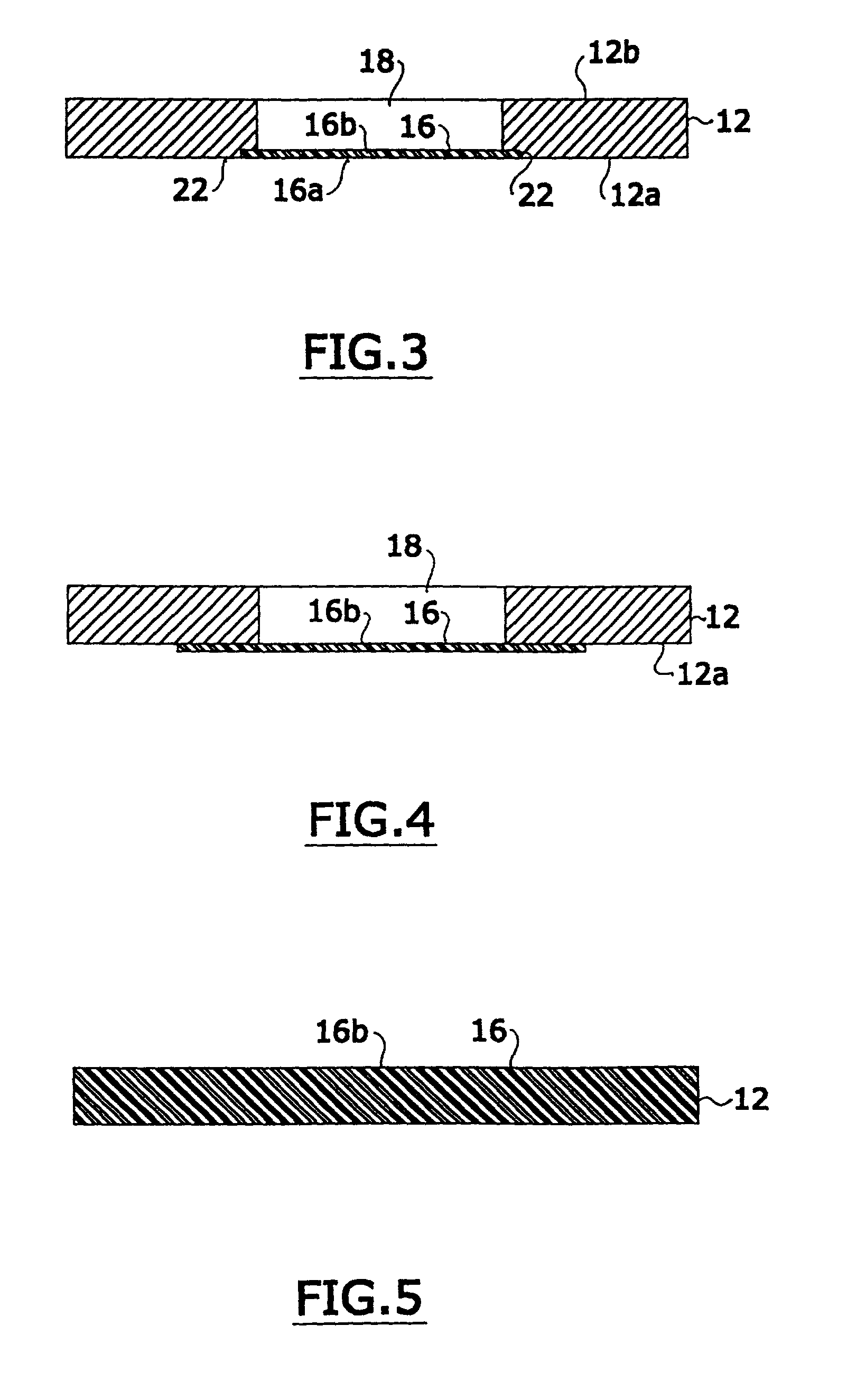Cassette for facilitating optical sectioning of a retained tissue specimen
a tissue specimen and optical sectioning technology, applied in the field of cassettes for retaining tissue specimens, can solve the problems of inconvenient optical sectioning, inconvenient operation, and inability to use optical imaging techniques, and achieve the effect of facilitating optical examination of tissue specimens
- Summary
- Abstract
- Description
- Claims
- Application Information
AI Technical Summary
Benefits of technology
Problems solved by technology
Method used
Image
Examples
Embodiment Construction
[0050]Referring to FIGS. 1-3, a cassette 10 of the present invention is shown having a base member 12 and an upper member 14. Base member 12 has an aperture 18 and a rigid optically transparent window 16 situated in aperture 18. The upper member 14 has an aperture 20 preferably substantially greater in size than the aperture 18 of base member 12. Base and upper members 12 and 14 are hinged at a hinge 24 which allows cassette 10 to have an open state, as shown in FIG. 1, and a closed state, as shown in FIG. 2, where upper member 14 covers base member 12. Although preferably base and upper members 12 and 14 are attached by a hinge 24, they may, in the alternative, be separate and unattached to each other when cassette 10 is in an open state.
[0051]As best shown in FIG. 3, at the bottom surface 12a of base member 12, the base member has an annular shelf 22 in communication with aperture 18. Window 16 is inset on shelf 22, such that bottom surface 12a of the base member is planar with th...
PUM
 Login to View More
Login to View More Abstract
Description
Claims
Application Information
 Login to View More
Login to View More - R&D
- Intellectual Property
- Life Sciences
- Materials
- Tech Scout
- Unparalleled Data Quality
- Higher Quality Content
- 60% Fewer Hallucinations
Browse by: Latest US Patents, China's latest patents, Technical Efficacy Thesaurus, Application Domain, Technology Topic, Popular Technical Reports.
© 2025 PatSnap. All rights reserved.Legal|Privacy policy|Modern Slavery Act Transparency Statement|Sitemap|About US| Contact US: help@patsnap.com



